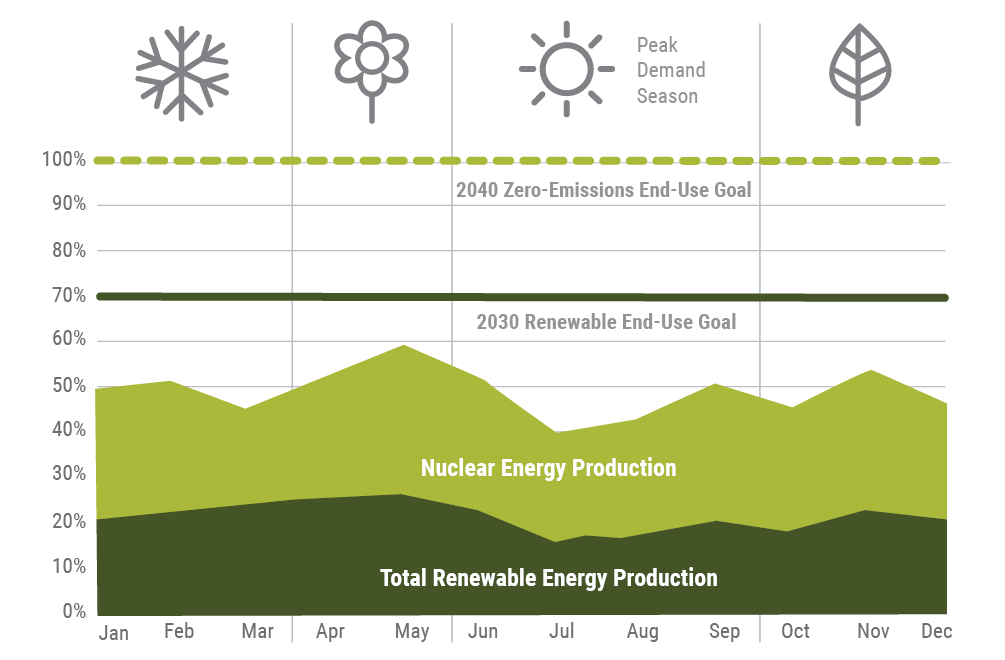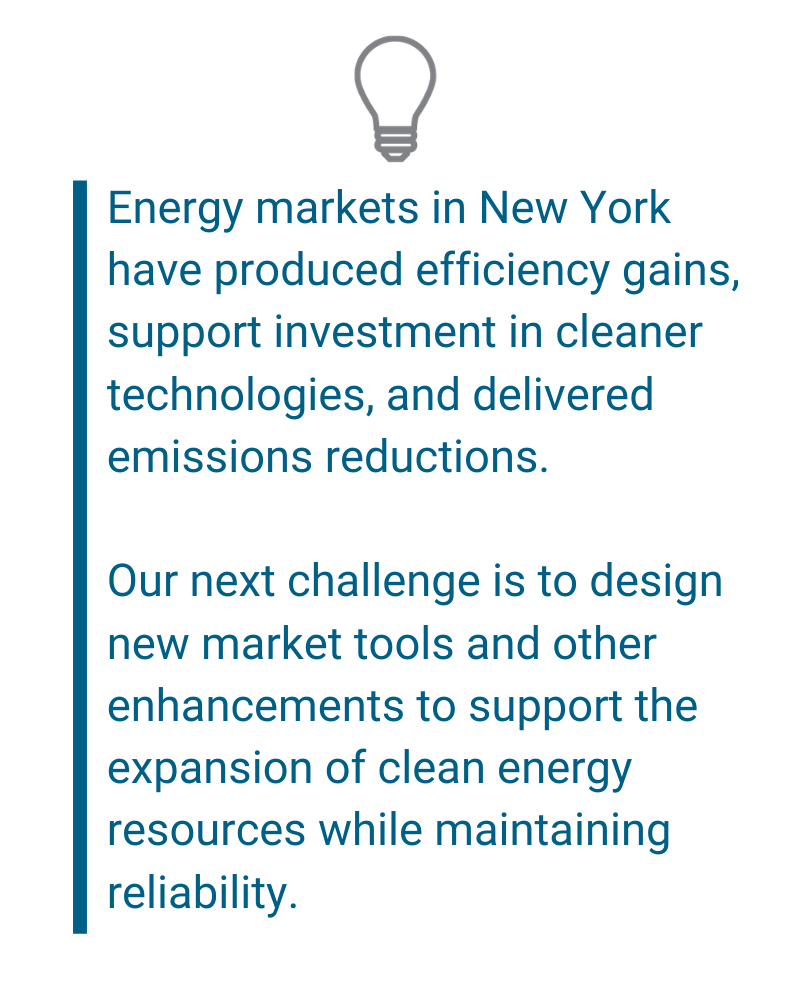The Role of Energy Markets in Meeting Public Policy

For 20 years, the NYISO’s wholesale electricity markets have delivered on the promise of value to consumers. Working in tandem with state emissions policies, our markets have also driven investment in new technology, significantly reduced greenhouse gas emissions, and kept energy prices low.
Now, state policy mandates are seeking a large investment in renewable resources such as solar and wind power, along with technologies like energy storage, which will help support these intermittent resources. The Climate Leadership and Community Protection Act (CLCPA) calls for serving 70% of demand with clean energy sources by 2030, and 100% carbon-free electricity by 2040.
This video demonstrates how far we need to go.
In 2019, renewable energy production from in-state resources represented 22% of overall statewide electricity load. All NY-based zero-emissions resources, which include wind, hydro, and nuclear power, amounted to 50% of statewide load. While the chart does not include the contributions of behind-the-meter solar production, or possible clean energy imports from neighboring regions, it is clear that substantial increases in large-scale clean energy generation from in-state resources will be needed to meet CLCPA mandates. Further, these resources will need capabilities to balance the short-term and seasonal variability in renewable energy production.
This is where our energy markets come in.
 In order to help New York meet its energy mandates, the NYISO is working with stakeholders on changes to our markets to promote investment in clean energy and the types of capabilities the grid will need to support reliability.
In order to help New York meet its energy mandates, the NYISO is working with stakeholders on changes to our markets to promote investment in clean energy and the types of capabilities the grid will need to support reliability.
Examples include:
- A carbon-pricing proposal, which would incorporate a “social cost” of carbon dioxide emissions into the wholesale cost of electricity, supporting investment in clean energy technologies, encouraging dirtier resources to close or become more efficient, and minimizing costs to consumers
- A new model to promote joint participation of distributed energy resources (such as rooftop solar or onsite power generation) in the energy market
- Energy storage rules, which can enable participation from batteries that can provide power to the grid for as little as two hours to more efficiently balance intermittent resources such as solar or wind
- Forecasting tools such as our partnership with NYS Mesonet to help predict solar and wind power based on finely-tuned weather forecasts, to more efficiently plan for intermittent generation
In addition to these efforts, the NYISO’s comprehensive planning processes are conducting analyses designed to inform future market design changes to support clean energy policies.
Public policy initiatives are shaping the grid of the future. Competitive wholesale electricity markets provide a framework to promote change in the power system. Our markets will continue to fulfill the mission and goals of reliability and economic efficiency while providing the right signals to investors to build the resources required to achieve state policy goals.
For more on the role of our energy markets, see Power Trends 2020.
For more information about wholesale electricity markets, read our eBook.

